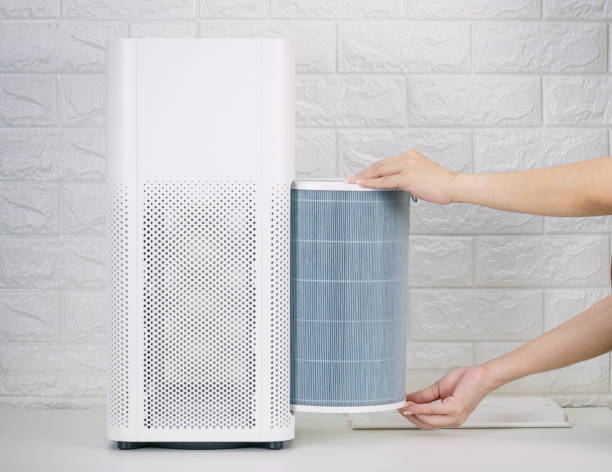Introduction:
Air pollution is a pervasive and pressing issue that affects people worldwide, posing significant threats to human health, the environment, and the economy. As urbanization, industrialization, and transportation continue to expand, so too does the emission of pollutants into the atmosphere. However, amidst these challenges, there is hope. Scientists, engineers, and innovators are tirelessly working to develop new technologies and strategies for air purification. In this blog post, we'll delve into the complexities of air pollution, explore the mechanisms of air purification, and highlight some of the latest advancements in this critical field.
Understanding Air Pollution:
Air pollution refers to the presence of harmful or excessive quantities of substances in the air, which can be detrimental to human health, ecosystems, and the climate. These pollutants can take various forms, including particulate matter (PM), nitrogen oxides (NOx), sulfur dioxide (SO2), volatile organic compounds (VOCs), ozone (O3), and carbon monoxide (CO). They are emitted from a variety of sources, including industrial facilities, vehicle exhaust, agricultural activities, and natural phenomena like wildfires and volcanic eruptions.
The consequences of air pollution are far-reaching. Exposure to pollutants can lead to respiratory problems, cardiovascular diseases, neurological disorders, and even premature death. Additionally, air pollution contributes to environmental degradation, such as acid rain, smog formation, and habitat destruction. Moreover, it exacerbates climate change by influencing the Earth's radiative balance and contributing to global warming.
Air Purification Techniques:
Given the serious health and environmental implications of air pollution, various methods have been developed to purify the air and mitigate its harmful effects. These techniques can be broadly categorized into mechanical, chemical, and biological processes.
-
Mechanical Filtration:
Mechanical filtration involves the use of physical barriers to trap and remove airborne particles from the air. Common examples include high-efficiency particulate air (HEPA) filters, electrostatic precipitators, and fabric filters. These devices effectively capture pollutants such as dust, pollen, smoke, and pet dander, improving indoor air quality.
A great example is the air purifier for offices by Euromate Pure Air.
2. Chemical Absorption:
Chemical absorption relies on the interaction between pollutants and certain chemical substances to remove them from the air. Activated carbon filters, for instance, adsorb gaseous pollutants like VOCs and odours by trapping them within the porous structure of the carbon material. Similarly, molecular sieves and zeolites can selectively adsorb specific molecules based on their size and chemical properties.
3. Biological Purification:
Biological purification harnesses the power of microorganisms, plants, and natural processes to clean the air. Indoor plants, such as peace lilies, spider plants, and snake plants, can absorb pollutants like benzene, formaldehyde, and trichloroethylene through their leaves and roots. Additionally, biofilters utilize microbial cultures to degrade organic pollutants and convert them into harmless byproducts.
Cutting-Edge Advancements in Air Purification:
As our understanding of air pollution grows and technology continues to advance, researchers and innovators are constantly developing new and improved solutions for school air purifiers. Some of the most promising advancements include:
-
Nanotechnology:
Nanomaterials have shown great potential for enhancing air purification processes. Nanostructured catalysts, for example, can efficiently catalyze the conversion of harmful gases into less toxic compounds. Similarly, nano-enabled filtration membranes offer improved performance and durability compared to traditional filters, allowing for more effective removal of nanoparticles and volatile organic compounds.
2. Photocatalysis:
Photocatalytic air purification involves the use of photocatalysts, such as titanium dioxide (TiO2), to degrade pollutants under the influence of ultraviolet (UV) light. This process generates reactive oxygen species that can oxidize and decompose organic contaminants, as well as neutralize harmful microorganisms like bacteria and viruses. Photocatalytic coatings applied to surfaces such as building facades, air ducts, and HVAC systems hold promise for enhancing indoor air quality and reducing the spread of infectious diseases.
3. Electrochemical Technologies:
Electrochemical oxidation and reduction techniques offer efficient and environmentally friendly approaches to air purification. Electrostatic precipitators equipped with advanced electrode materials can achieve high removal efficiencies for particulate matter and aerosols. Additionally, electrochemical reactors, such as plasma-assisted catalytic converters, enable the selective removal of nitrogen oxides from vehicle emissions, helping to curb urban air pollution and meet stringent air quality standards.
4. Artificial Intelligence (AI) and IoT Integration:
The integration of artificial intelligence and Internet of Things (IoT) technologies holds immense potential for optimizing air purification systems and monitoring air quality in real time. AI algorithms can analyze vast amounts of data from sensors, satellites, and environmental monitoring stations to predict air pollution levels, identify pollution hotspots, and optimize the operation of purification devices. IoT-enabled smart air purifiers can adjust their settings based on detected pollutants and user preferences, providing personalized and efficient air treatment solutions.
Conclusion:
In conclusion, air pollution remains a significant challenge with far-reaching implications for human health, the environment, and society as a whole. However, through the concerted efforts of researchers, engineers, policymakers, and the public, progress is being made towards cleaner and healthier air. From traditional filtration methods to cutting-edge nanotechnology and AI-driven solutions, a wide range of technologies and strategies are available for air purification. By embracing innovation, raising awareness, and taking collective action, we can strive towards a future where everyone breathes clean and fresh air.







